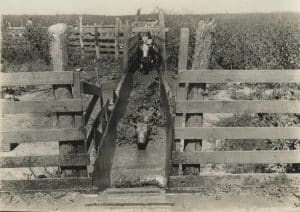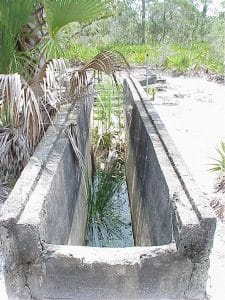 Contributed by Kevin Grosjean, Staff Geologist, PPM Consultants
Contributed by Kevin Grosjean, Staff Geologist, PPM Consultants
Texas fever they called it, though it was common in cattle all across the southern United States as early as the 18th Century the fever was known to spread through the contact of infected cattle with uninfected herds. So, many ranchers in the middle states met the cattle drives from the South on their way to the Northern slaughterhouses with guns to protect their own livelihoods. By 1906, Texas fever was known to be caused by cattle ticks and soon a great eradication effort took shape. In the next three decades or so, the program set not only North against South, but also big ranchers against small ones and even counties against states.

Today, we conduct Phase I environmental site assessments in accordance with all appropriate inquiry to identify environmental risks at sites, or “recognized environmental conditions” (REC) as the prevailing ASTM standard refers to them. Agricultural or rural properties may at times seem like mundane due diligence efforts with large tracts of land to review that have very little current or historical development at the property. However, as the old saying goes – “the devil is in the details!” and all appropriate inquiry is very broad with many aspects to consider. One of the devilish details to consider on agricultural properties is the possible former use of Cattle Dipping Vats (CDV) that may have been part of the cattle tick eradication program through the first half of the 20th Century.
CDV’s were built across Florida (as part of a state and federal government program) to combat Texas cattle fever spread by cattle fever ticks. The program lasted from 1915 until 1960. CDV’s would have been constructed in other states with similar outbreaks but many of the vats were constructed in Florida due to the mandated program.
The CDV’s were often elongated concrete trenches, pictured below, that held a water-based solution of pesticides. The main pesticide used for CDV’s was arsenic but could have included dichloro-diphenyl-trichloroethane (DDT) and toxaphene. Florida cattle would have been ushered through narrow pens until reaching the trench and completely immersed in the pesticides for tick removal. Once cattle had completed this process, they would have dripped dry in an additional holding pen.

When conducting a Phase I Environmental Site Assessment in Florida it is important to take CDV’s in consideration, especially if the subject property was historically listed as a ranch in the early to mid-1900’s. Florida Department of Environmental Protection (FDEP) records indicate that over 3,200 CDV’s were used in Florida. Known CDV sites in Florida can be found here. Because there was no requirement for registering the vats, the actual number of historical CDV’s could be much higher. If the site you are researching meets the qualifications of a ranch during this time period and the site reconnaissance includes any wooden livestock pens leading to wooden or concrete trenches, you have very likely discovered a CDV.
Once you have located a CDV on your site and it is determined to be a REC, a Phase II Site Assessment may be conducted to see if soil or groundwater media has been affected by the CDV in concentrations above the FDEPs default Soil Cleanup Target Levels (SCTLs). It is noted that FDEP does not enforce cleanup of cattle dip vats. Florida statute provides a broad exemption for “any private owner of property in this state upon which cattle dip vats are located.” Based on ASTM’s definition, the presence of a cattle dip vat still constitutes a REC, even though corrective action would be done on a voluntary basis.
In many cases, the contamination at CDV sites will be limited to the soil and an excavation will be the best choice for remediation. If groundwater has been affected, remedial alternatives should be fully explored to ensure the most effective and cost-efficient solution.
Links for more information on CDV’s is provided below:
Voluntary Cleanup of Cattle Dip Vats
If you want to discuss CDV’s further or have other due diligence related questions, please feel free to reach out to me at kevin.grosjean@ppmco.com.

